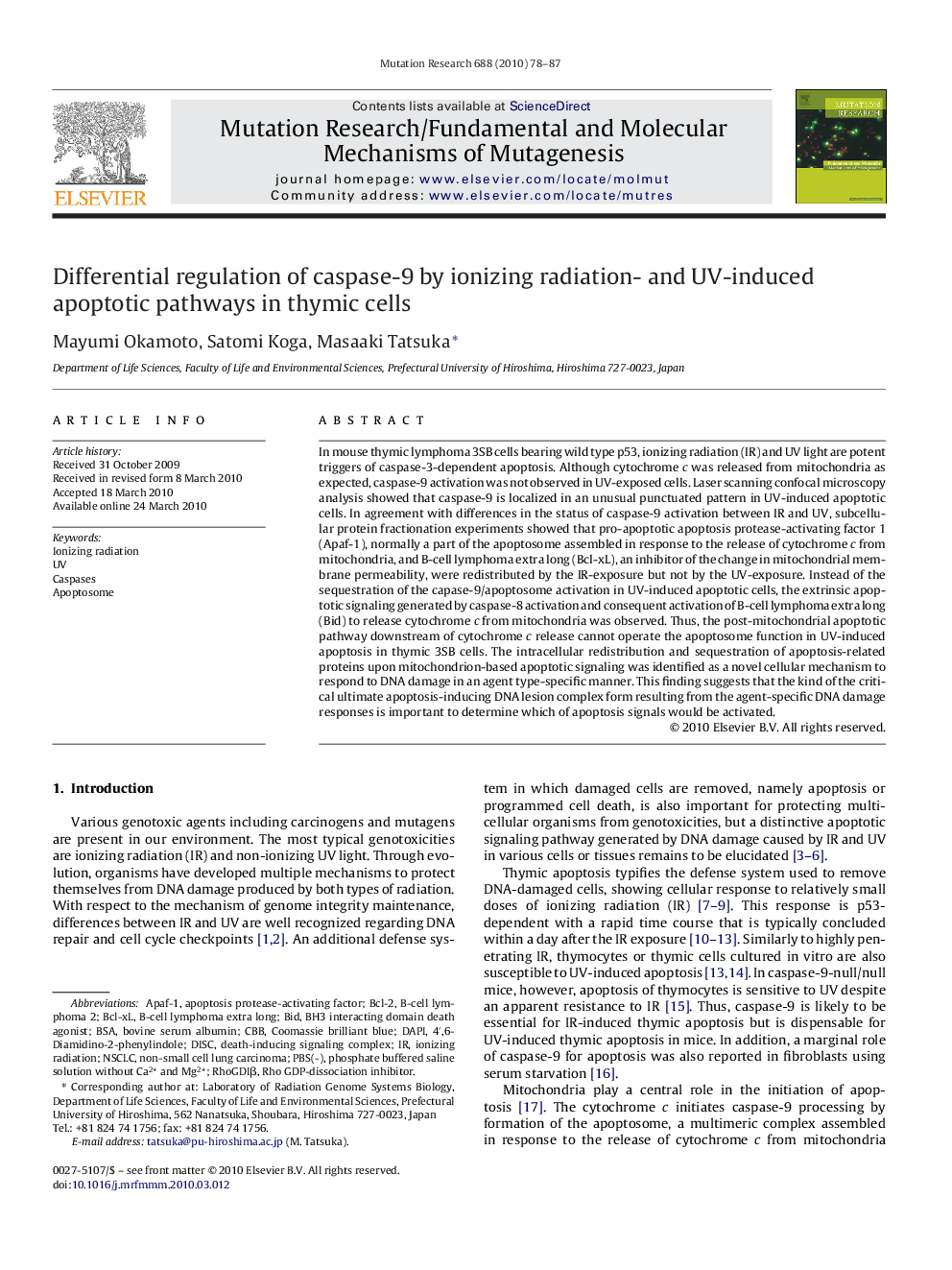| کد مقاله | کد نشریه | سال انتشار | مقاله انگلیسی | نسخه تمام متن |
|---|---|---|---|---|
| 2146818 | 1548374 | 2010 | 10 صفحه PDF | دانلود رایگان |
عنوان انگلیسی مقاله ISI
Differential regulation of caspase-9 by ionizing radiation- and UV-induced apoptotic pathways in thymic cells
دانلود مقاله + سفارش ترجمه
دانلود مقاله ISI انگلیسی
رایگان برای ایرانیان
کلمات کلیدی
Bcl-xLDISCBcl-2CBBAPAf-1DAPI4′,6-diamidino-2-phenylindole - 4 '، 6-دیامیدینو-2-فنیلینولBH3 Interacting Domain Death Agonist - BH3 تعامل دامنه آگونیست مرگBSA - BSACoomassie Brilliant Blue - Coomassie درخشان آبیbovine serum albumin - آلبومین سرم گاوApoptosome - آپوپتوزومionizing radiation - تابش یوننده یا پرتوهای یونیزانNSCLC - سرطان ریوی غیر سلول کوچکB-cell lymphoma 2 - لنفوم سلول B 2BID - پیشنهادdeath-inducing signaling complex - پیچیدگی سیگنالینگ ناشی از مرگnon-small cell lung carcinoma - کارسینوم ریه سلول غیر سلولیCaspases - کاسپاز
موضوعات مرتبط
علوم زیستی و بیوفناوری
بیوشیمی، ژنتیک و زیست شناسی مولکولی
تحقیقات سرطان
پیش نمایش صفحه اول مقاله

چکیده انگلیسی
In mouse thymic lymphoma 3SB cells bearing wild type p53, ionizing radiation (IR) and UV light are potent triggers of caspase-3-dependent apoptosis. Although cytochrome c was released from mitochondria as expected, caspase-9 activation was not observed in UV-exposed cells. Laser scanning confocal microscopy analysis showed that caspase-9 is localized in an unusual punctuated pattern in UV-induced apoptotic cells. In agreement with differences in the status of caspase-9 activation between IR and UV, subcellular protein fractionation experiments showed that pro-apoptotic apoptosis protease-activating factor 1 (Apaf-1), normally a part of the apoptosome assembled in response to the release of cytochrome c from mitochondria, and B-cell lymphoma extra long (Bcl-xL), an inhibitor of the change in mitochondrial membrane permeability, were redistributed by the IR-exposure but not by the UV-exposure. Instead of the sequestration of the capase-9/apoptosome activation in UV-induced apoptotic cells, the extrinsic apoptotic signaling generated by caspase-8 activation and consequent activation of B-cell lymphoma extra long (Bid) to release cytochrome c from mitochondria was observed. Thus, the post-mitochondrial apoptotic pathway downstream of cytochrome c release cannot operate the apoptosome function in UV-induced apoptosis in thymic 3SB cells. The intracellular redistribution and sequestration of apoptosis-related proteins upon mitochondrion-based apoptotic signaling was identified as a novel cellular mechanism to respond to DNA damage in an agent type-specific manner. This finding suggests that the kind of the critical ultimate apoptosis-inducing DNA lesion complex form resulting from the agent-specific DNA damage responses is important to determine which of apoptosis signals would be activated.
ناشر
Database: Elsevier - ScienceDirect (ساینس دایرکت)
Journal: Mutation Research/Fundamental and Molecular Mechanisms of Mutagenesis - Volume 688, Issues 1â2, 1 June 2010, Pages 78-87
Journal: Mutation Research/Fundamental and Molecular Mechanisms of Mutagenesis - Volume 688, Issues 1â2, 1 June 2010, Pages 78-87
نویسندگان
Mayumi Okamoto, Satomi Koga, Masaaki Tatsuka,